I live in the Pacific NW, and as you may have heard, it rains a lot here. Being a long distance trail runner, this poses some interesting gear challenges. The winter months can be particularly tricky to gear up for, especially when you might wind up running for hours in steady, cold rain. In order to tackle this challenge, I reached out to Arc’teryx, as they make some of the highest quality mountain gear in the industry. I’ve been very impressed by everything I’ve tried from Arc’teryx so far. I’m pleased to say that the gear I received in response to my inquiry didn’t disappoint (Disclosure: the items reviewed here were media samples provided free of charge by Arc’Teryx).
The items I’ll reviewing in this post are the Incendo Hoody, Tecto FL Hoody, Alpha SV Mitt, Accelero Tight, Cyclic Zip Neck, Accelero short, and the Poco Cap. I’ve tested these items during short and long runs on my local mountains. I’ve worn them primarily while running, but also for hiking, snowboarding, and snowshoeing.
Alpha SV Mitts
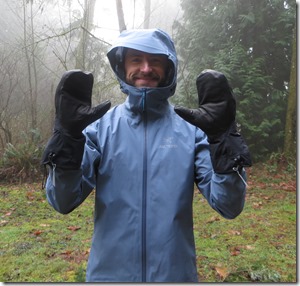 The Alpha SV mitts are designed for climbing and alpine use. They caught my attention for trail running because they utilize a “waterproof/breathable N80p-X GORE-TEX® fabric.”
The Alpha SV mitts are designed for climbing and alpine use. They caught my attention for trail running because they utilize a “waterproof/breathable N80p-X GORE-TEX® fabric.”
When my hands get wet during long, cold, rainy runs, things can get pretty miserable. I’ve tried merino wool gloves, a wide range of typical performance running gloves, and overmitt shells. None of them really worked for very long in nasty weather.
Construction: The Alpha SVs are very well made. They have leather reinforcement areas on the palm and the back of the hand. The fleece liners are removable, and the design is seamless and perfectly tailored. Here’s how Arc’Teryx describes the liner: “The inner fleece liner is a hi-loft Polartec® Wind Pro® textile with high wind resistance, low stretch, exceptional warmth and breathability to keep working hands dry in cold environments.” The liners go in and come out easily, and are attached below the wrist in the front and back with velcro. These liners were made to fit perfectly in the overmitts, and do so flawlessly. Take them out, and you notice how warm and well designed they are. As the mitts are designed to be used by climbers, they’re very well constructed, and able to take more of a beating than anything a runner would typically deliver.
Performance: I found the mitts very comfortable when running in rain and snow, from 20 degrees to 35 degrees. Any warmer than 40 degrees and the mitts felt too hot with the liners in. Switching the liners out for a light merino wool glove worked well in that situation. The shells let the water bead off, and didn’t allow for an unpleasant soak through. At $225, they’re not cheap. But, having warm dry hands throughout a long wet run is something that doesn’t come easily. If I was going to run an ultra through nasty weather, these babies would fit the bill perfectly.
Tecto FL Hoody
In order to keep my upper body dry on long, cold, wet runs, I tested the Tecto FL Hoody.
Construction: This jacket features Gore-Tex Active fabric, which is the lightest and most breathable Gore-Tex fabric you can find at this time. The jacket is designed for moving fast through wet weather. The Tecto FL is very light, weighing in at just over 10 ounces. To cut down on weight, the design team didn’t include pit vents or hand pockets. There’s one water sealed pocket on the upper left arm – just enough to carry a couple of cards and a key. The fit is trim, and the minimalist die-cut cuff tabs work beautifully to keep the elements out of the lower arm, while still offering adjustability.
If you visit the product page on the Arc’teryx site, they do a great job of describing how to keep the jacket (or any jacket of this sort) waterproofed. This is key, as many people spend more to get a waterproof yet breathable jacket, then neglect to care for it when the DWR finish begins to wear off. Pay particular note to spots where there’s rubbing against a hydration vest, waist belt, or that sort of thing. This jacket packs down nicely, and comes with a small stuff sack that, when stuffed, is about the size of a fist.
Performance: Given the generously sized hood, it’s clearly meant to accommodate a climbing or skiing helmet. This works well when hiking, but didn’t work out well for running. The extra material (that would fit snugly around a helmet) tends to bounce and cause a booming noise effect around the ears when running. That said, I tested the jacket because I was interested in the material, not so much the hood. Fortunately, the material works excellently in the rain. It’s surprisingly breathable – so much so that I wouldn’t even consider it a wind shell. But when it starts raining, the water rolls right off and continues to do so throughout the run. If worn with a Gore-Tex Active shelled hat, this would be an ideal combo. This thing wears the way I’d want a running jacket to wear, and did a phenomenal job of keeping me dry during multi-hour long runs.
Incendo Hoody
Construction: Another jacket I tested was the Incendo Hoody. Unlike the more technical Tecto FL, this jacket is specifically designed for running, and as such has a hood made for the head vs. a helmet. It’s very light, and as such it’s very easy to pack it down and carry it in a hydration vest or pack. The jacket has a water resistant fabric that is perfect for short periods of rain, but doesn’t keep a runner dry for extended runs in a downpour.
Performance: The jacket felt nice and light. It breathed well, and was comfortable on windy, mildly rainy, or snowy days. Above 50 degrees, the jacket felt too warm to wear in light rain. The hood was comfortable, not too loud, but came down a little low over my forehead – interfering with my vision a bit. I think having a slightly rigid edge might help with this. It packs down nicely, and takes up very little room (and adds very little weight) in a hydration vest/pack.
Cyclic Zip Neck
Construction: For cold trail runs, I tried the Cyclic Zip Neck. This is a mid to heavy-weight running shirt, with a zipper coming down to the chest. It offers thumb loops for a little extra warmth, but is comfortable to wear without using them.
My Impressions: I found this shirt to be very comfortable when paired with a jacket or vest when temperatures were in the 20s F, and by itself when the temps were in the 30s. It managed perspiration well, and the material feels very durable. A nice option for under a jacket like the Tecto FL, which was why I chose it. No rubbing or other design concerns to report.
Accelero Tights
The running tights I tested were the Accelero Tights. These feature a smooth finish fabric that makes them feel like satin.
Performance: These are, hands down, the most comfortable running tights I have ever owned. Some of my other running tights actually catch the hair on my legs from time to time and create a bit of friction. The Acceleros go on smooth and run even smoother. I find myself wanting to wear them even when I’d ordinarily go for a pair of shorts. They’re the perfect cool weather tight in my opinion. I like the integrated key pocket, and the mesh paneling on the back of the leg, the flat-locked seams and the stretchy feel. They felt great up to about 50 degrees, at which point they were a bit warm.
Accelero Shorts
 Many of my friends like running tights for winter running, but prefer to wear shorts on top (read more on the great shorts over tights debate here). For this reason, I tried out the Accelero shorts. These are lightweight and breathable, medium to long in length, and have a DWR coating. The DWR coating is nice, especially in the winter, as it helps to repel some of the rain, allowing the upper leg to stay drier longer. There’s also a side stash pocket with a zipper – a nice touch for a key and driver’s license.
Many of my friends like running tights for winter running, but prefer to wear shorts on top (read more on the great shorts over tights debate here). For this reason, I tried out the Accelero shorts. These are lightweight and breathable, medium to long in length, and have a DWR coating. The DWR coating is nice, especially in the winter, as it helps to repel some of the rain, allowing the upper leg to stay drier longer. There’s also a side stash pocket with a zipper – a nice touch for a key and driver’s license.
Performance: These are very comfortable and don’t add much at all to the overall weight. There’s no binding or restrictive feeling when running. I do sometimes find that I catch my thumb on the side pockets when running, especially on the flats and uphills sections. That said, the pockets were handy for stashing some running gloves in cool weather.
Poco Cap
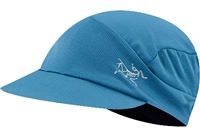 I have been looking for a lightweight, packable hat. Accordingly, the Poco Cap appealed. It scrunches down to about half the size of my fist, yet maintains its shape nicely when unfurled. A breathable cap for sure, but the tight mesh weave actually gives it a warmer feel than would appear.
I have been looking for a lightweight, packable hat. Accordingly, the Poco Cap appealed. It scrunches down to about half the size of my fist, yet maintains its shape nicely when unfurled. A breathable cap for sure, but the tight mesh weave actually gives it a warmer feel than would appear.
Performance: I find the Poco cap very comfortable, and prefer this hat on cool days without steady rain. It offers up a bit of that city retro styling, which is new for me on the trail. I’ve been caught wearing this to the coffee shop after the run. Too comfortable to take off it seems.
Where to purchase: All of the gear in this review can be purchased at the Arc’Teryx website, at REI.com, or at Amazon.com. Purchases made via these links help keep reviews like this coming, thank you for your support!

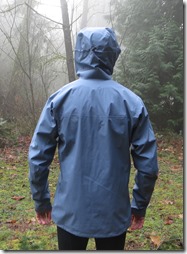
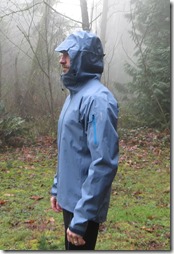
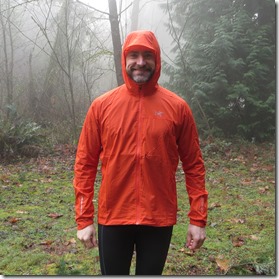
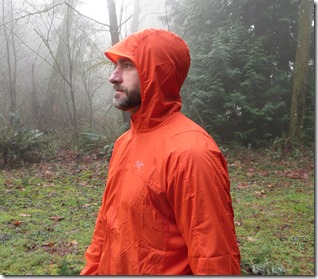
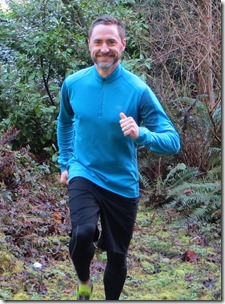

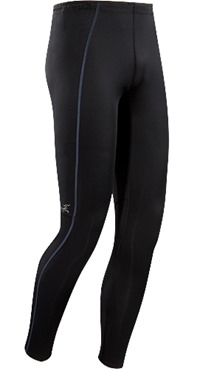
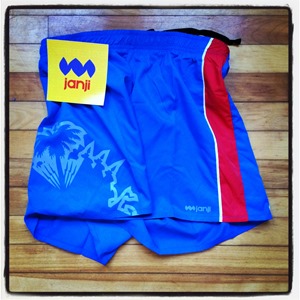














Appreciate the reviews but Arc’Teryx gear is just way too expensive. If you have patience you can catch Patagonia and Marmot stuff on sale at places like steepandcheap.com for a fraction of the price.
Agree that Arc’teryx gear is expensive. Pretty sure all the gear in this article is $1000 or more at MSRP. (I know I could look it up to be sure, but won’t bother)
That said, it is very good quality stuff, and the few Arc’teryx items that I do own are definitely favorites of mine to wear. Construction and materials are always great and hold up well. Looks and appearances are top notch in my view as well. If you can afford their stuff, or find it discounted (like I did), it is a good investment.
Big thanks to Runblogger for posting this topic. I’ve been looking at using my REI dividend and member discount toward some Arc’teryx gear this year, and this is a big help as solid reviews on their gear are hard to find.
Thanks for this awesome review! I will definitely be checking these products out for the upcoming rainy, spring weather.
What a great post, thank you Ben!
To be honest, using Alpha SV glove during running is not a professional choice. It is designed for Alpine climbing or skiing, rather than running. It is bulky and not that breathable when you run. A better option is venta glove which uses windproof materials.
Hi, I wanted to ask what size was the incendo jacket that was tested and what was the height/chest of the person that tested it. Did it run a bit small?